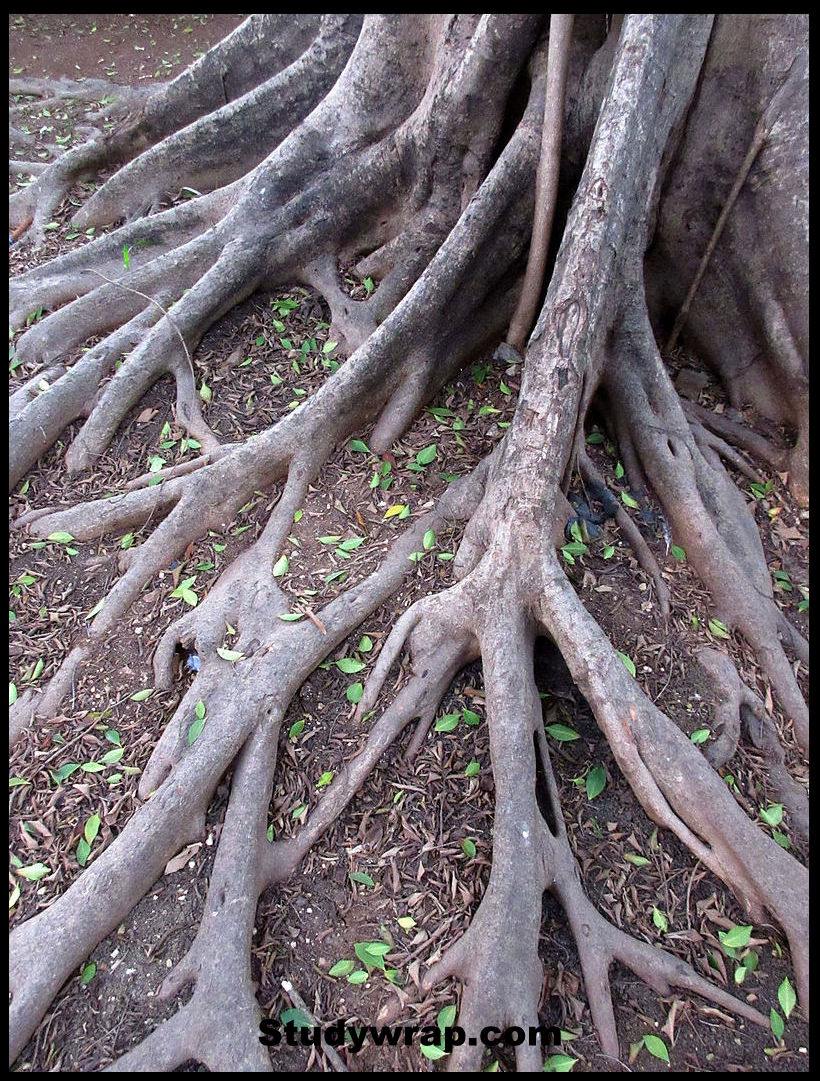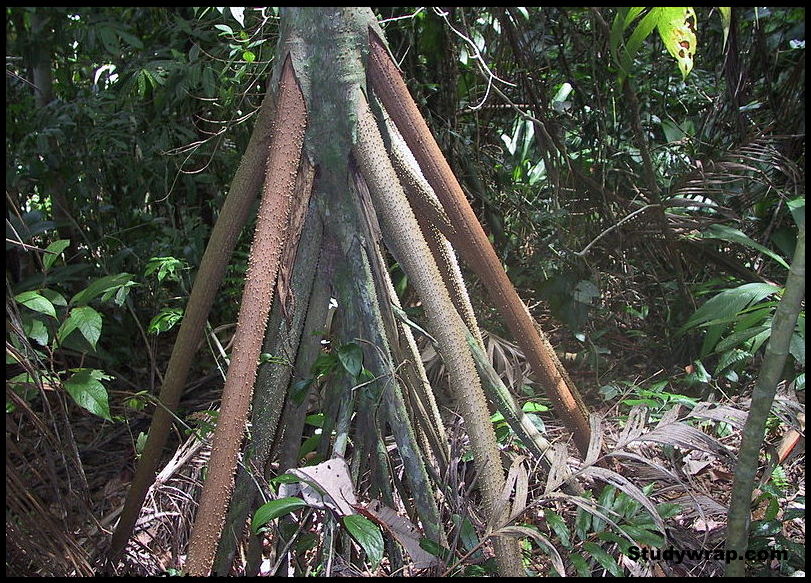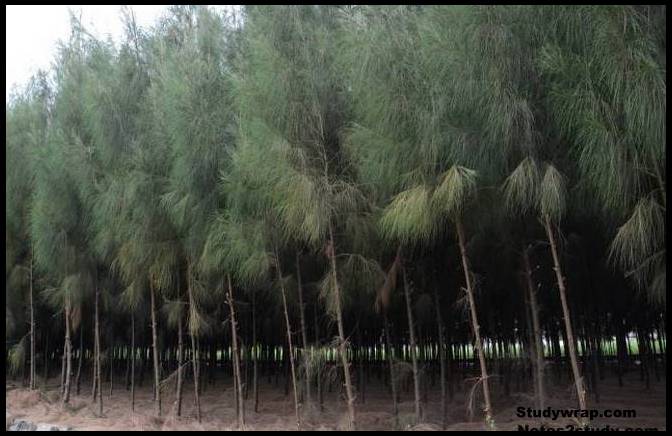Classification of Natural Vegetation of India
Classification of Natural Vegetation of India
Table of Contents
- Great Variation in natural vegetation is found in different parts of India which is primarily based on seasonal and annual variations in rainfall, temperature, soil, topography and various other biotic factors.
- H.G. Champion’s Classification of Natural Vegetation of India can be divided into 5 main types and 16 sub-types as given below.
-
-
- Moist Tropical Forests
-
- Tropical Wet Evergreen
- Tropical Semi-Evergreen
- Tropical Moist Deciduous
- Littoral and Swamp
-
- Dry Tropical Forest
-
- Tropical Dry Evergreen
- Tropical Dry Deciduous
- Tropical Thorn
-
- Montane Sub-tropical Forests
-
- Sub-tropical broad leaved hill
- Sub-tropical moist hill (pine)
- Sub-tropical dry evergreen
-
- Montane Temperate Forests
-
- Montane Wet Temperate
- Himalayan Moist Temperate
- Himalayan Dry Temperate
-
- Alpine Forests
-
- Sub-Alpine
- Moist Alpine scrub
- Dry Alpine scrub
-
- Moist Tropical Forests
-
Classification of Natural Vegetation of India
A. Moist Tropical Forests
(Or Tropical Evergreen Forest)
Evergreen because there is no definite time for trees to shed their leaves, flowering and fruit bearing season. These forest appears green all-round the year, hence named Evergreen Forest.
Stratification of Tropical Wet Evergreen Forest
Classification of Natural Vegetation of India (Moist Tropical or Evergreen Forests)
|
Name |
Distribution |
Climatic Condition |
Characteristic |
Timber |
|
Tropical Wet Evergreen Forests or Rain Forests
|
|
|
|
|
|
Tropical Semi-Evergreen Forests
|
Studywrap.com |
|
|
|
|
Tropical Moist Deciduous
|
|
Studywrap.com
|
|
|
|
Littoral and Swamp Forests
|
|
Studywrap.com
|
|
|
Buttress Root Stilt Roots
B. Dry Tropical Forests
Classification of Natural Vegetation of India (Dry Tropical Forests)
|
Name |
Distribution |
Climatic Condition |
Characteristic |
Timber |
|
Tropical Dry Evergreen Forests
|
Studywrap.com
|
|
|
|
|
Tropical Dry Deciduous Forests
|
|
Studywrap.com
|
|
|
|
Tropical Thorn Forests
|
|
Studywrap.com
|
|
|
Casuarina plantation
-
-
- It resembles feathery conifer in general appearance.
- They are rapid-growing, carefree species for sites and climates as varied as coastal sand dunes, high mountain slopes, hot humid tropics, and semi-arid regions.
- They have the ability to fix atmospheric nitrogen. It grows 15 to 25 m in height on an average.
- It resembles feathery conifer in general appearance.
-
Distribution
-
-
-
- Casuarina is the most popular farm forestry in the states of Andhra Pradesh, Tamil Nadu, West Bengal, Odisha, Maharashtra, Gujarat, and Karnataka.
-
-
Benefits
-
-
-
- Reduces damage in the event of natural calamities.
- Line planting in the coastal areas helps in controlling the wind force.
- It is also used for tourism promotion in view of its ornamental appearance.
- It provides top quality firewood.
- The wood is suitable for paper pulp and useful raw material for the manufacture of paper for writing, printing, and wrapping.
- It is got some serious medicinal values as well.
- Reduces damage in the event of natural calamities.
-
-
Wasteland development
-
-
-
- The characteristics which make it a suitable species for wasteland development include adaptability to wide range of habitats, fast growth, salt tolerant, drought resistant, ability to reclaim land and stabilize sand dunes.
- Inter-crops such as groundnut, cucumber, watermelons, sesamum, and pulses can also be raised along with the plantation.
-
-
C. Montane Sub-Tropical Forests
Classification of Natural Vegetation of India (Montane Sub-Tropical Forests)
|
Name |
Distribution |
Climatic Condition |
Characteristic |
Timber |
|
Sub-tropical Broad-leaved Hill
|
|
Studywrap.com |
|
|
|
Sub-tropical Moist Pine Forests
|
|
|
|
|
|
Sub-tropical Dry Evergreen
|
|
|
Studywrap.com |
|
D. Montane Temperate Forests
Classification of Natural Vegetation of India (Montane Temperate Forests)
|
Name |
Distribution |
Climatic Condition |
Characteristic |
Timber |
|
Montane Wet Temperate Forests
|
Studywrap.com |
|
Studywrap.com |
Important Species -Deodar, Chilauni, Indian chestnut, birch, plum, machilus, cinnamon, litsea, magnolia, blue pine, oak, hemlock, etc. |
|
Himalayan Moist Temperate
|
|
Studywrap.com |
|
|
|
Himalayan Dry Temperate Forests
|
|
|
|
|
E. Alpine Forests
-
- Occurs all along the Himalayas at Altitudes ranging between 2,900 to 3,500 m.
- These forests can be divided into:
- Sub-alpine
- Moist alpine scrub
- Dry alpine scrub.
a. Sub-Alpine Forest
-
-
- The sub-alpine forests occur at the upper limit of tree forest adjoining alpine scrub and grasslands and comprise of dense growth of crooked trees and large shrubs with coniferous trees.
- It is a mixture of coniferous and broad-leaved trees. Coniferous trees can attain a height of about 30 m while the broad leaved trees reach only 10 m.
- Fir, spruce, rhododendron, etc. are important species.
-
b. Moist Alpine Scrubs
-
-
- It is a low evergreen dense growth of rhododendron, birch etc. which occurs from 3,000 m and extends upto snowline.
-
c. Dry Alpine Scrubs
-
-
- The dry alpine scrub is the uppermost limit of scrub xerophytic, dwarf shrubs, over 3,500 m above sea level and found in dry zone.
- Juniper, honeysuckle, Artemisia etc. are important species.
-
Distribution
It occurs above 2700 m of altitude in the eastern Himalayas and above 3000m in the western Himalayas.
Important Species
It is a dense scrubby forest of Silver Fur, Juniper, Pine, Birch and Rhododendron.
Characteristic Features
-
-
- The alpine forests give way to alpine grasslands through shrubs and scrub. These extend upwards up to the snowline.
- Bugyals: Bugyals are high altitude alpine grasslands or meadows in Uttaranchal (at an elevation between 3400m and 4000m). These are referred to as ‘nature’s own gardens’. The topography of the terrain is either flat or sloped. The surface of these Bugyals is covered with natural green grass and seasonal flowers. They are used by tribal herdsmen to graze their cattle. During the winter season the alpine meadows remain snow-covered. During summer months, the Bugyals present a riot of beautiful flowers and grass. Bugyals have a very fragile ecosystem. Some examples of Bugyals: Auli (near Joshimath), Gorso, Kwanri Bugyal, Bedni, Panwali and Kush Kalyan, Dayara, Munsiyari Bugyal etc.
-
So, this was all about the Natural vegetation of India or Classification of Natural Vegetation of India.
In the next post (Click Here), we will Study about the Natural Products, Problems & Remedies of the natural vegetation of India.






Hi. I’m glad rhat i found this website, I really like it, the article is very useful
Have a Great success!